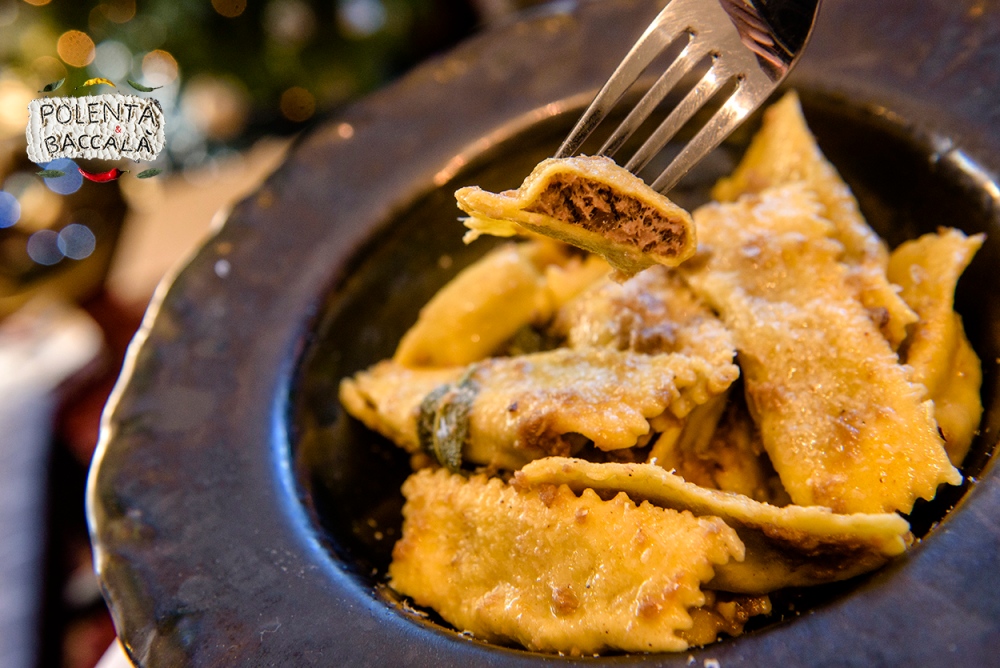
Christmas arrived and like every year I love to prepare the traditional good recipes of this feast 🙂 since I’m Italian I do Italian recipes, usually the ones of my area of origin, but from north to south in Italy there are countless traditional recipes for Christmas so sometimes I like to pick also recipes from other places of the country 🙂 I love them all.
This year I decided to make the Agnolotti, a traditional filled pasta from Piedmont region mostly, in particular the territory of Montferrat, and the filling is absolutely amazing: beef slowly braised in red wine. And it’s not uncommon to add also some spinach or some edible wild grasses.
So this is a recipe that will keep you busy for some hours 🙂 but good food it’s also this, and during Christmas time it’s even better to spend this time in the kitchen. And probably that’s why this is a typical Christmas recipe 🙂
The name Agnolotti is of uncertain origin: someone say that it derives from the name of its inventor, such Angelot. But modern theories suggest that the origin derives from “anulòt”, a ring-shaped iron tool that was originally used to make this pasta.
So originally they were round, then during the time they changed their shape to the actual square shape, or in the area of Langhe and Montferrat there is a smaller version, with a rectangular shape, called “Agnolotti al plin” (plin means nip, which is the movement done to seal them).
What makes the Agnolotti of Piedmont different from most of the other filled pasta in other regions of Italy is the use of braised/stewed meat in the filling. Usually beef meat (but also veal and rabbit are used), but for example there is a village called Calliano where they use only donkey meat for their traditional Agnolotti, and it’s famous for that. Moreover there isn’t a real traditional recipe for the filling, because this dish was born to re-use some leftovers from braised/stewed meat from the previous days, so it could vary from family to family and from time to time, depending on what remained 🙂 of course, nowadays the braise/stew is often prepared with the purpose of making this filled pasta.
Let’s see now how to make it!
INGREDIENTS (for 7-8 people, about 120 pieces, but it depends on their size and the thickness of the pasta):
For the braise/stew:
- 800-1000 g of beef (I suggest the flat iron because thanks to its internal vein of connective tissue keeps the meat more tender and juicy, but also other stew cuts are fine)
- A good red wine, enough to cover the meat for the marinade, I used about 400-500 ml
- 2 onions
- 1 carrot
- 1 celery rib
- some cloves, juniper berries and peppercorns
- 1-2 bay leaves
- butter, about 40-50 g
- salt
- flour
- freshly ground black pepper
For the pasta:
- 600 g flour
- 6 eggs
For the filling:
- the braised beef meat and its sauce
- freshly grated Parmigiano Reggiano, at least 80-90 g
For the sauce:
- butter (count at least 25-30 g per person, remember: it’s a feast recipe 😀 )
- sage leaves
- First of all you have to prepare the marinade for the flat iron cut: take a bowl large enough to contain the meat, add all the vegetables cut in big pieces, the spices and cover with the wine. Cover it hermetically and place it in the fridge for 8-12 hours.
- The day after remove the meat from the marinade, drain it, tie it with a butcher’s twine (optional in this case, since we will not eat it sliced), pass it in the flour (but not too much, just enough to cover it) and then brown it at high heat in a pan (where you have put a drizzle of extra virgin olive oil).
- While the meat is browning well take a cocotte/pan large enough to contan the meat, and start heating the butter, then add the vegetables of the marinade.
- When the meat is browned on all the sides put it in the cocotte with the vegetables, add the wine from the marinade until it covers about half of the meat or a bit more, add the bay leaves and when it reaches the boil set the heat on low. Add also the salt and some ground black pepper. Let it simmer covered until the meat is very soft, indicatively 2 hours and half/3 hours, depending on the cut and the quality of the meat (in this case my flat iron was 880 grams and it took a bit less than 2 hours and half). Turn it every about 30 minutes.
- After approximately the first 2 hours you can start to prepare the dough: sift the flour, add the eggs in the center and then mix the two together. When you have obtained a dough put it on your working table and work it energetically for about 10 minutes, until nicely smooth and strong. Then cover it with a plastic wrap and let it rest for about 30 minutes.
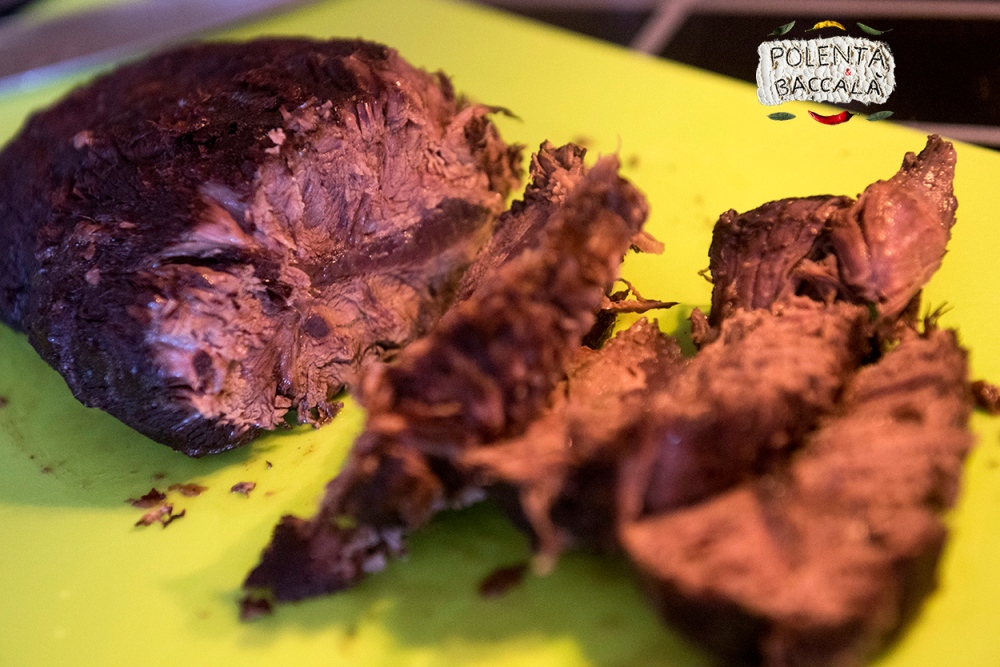
- Control if the meat is ready, and if it’s ready take it out and place it on a cutting board and let it rest few minutes. Meanwhile take an immersion blender and blend its sauce with all the vegetables (remove the bay leaves), then put it back in the cocotte to reduce better, if needed.
- Then cut the meat into smaller pieces and put it in a food processor with some spoons of the sauce (not too much) and the freshly grated Parmigiano Reggiano, and blend everything together, until you obtain something like in the photo below.

- Now take the dough and cut it in 3-4 pieces and while you work one piece keep the others covered otherwise they get dry. Flatten the dough at about 2 mm thick (I used the manual pasta machine, at the second thinnest option, but you can use also the thinnest option if you prefer), then place the filling, then close them and cut as showed in THIS video. Take care to push out all the air. Place them on trays, with some flour on the bottom, and keep them covered with clean towels.
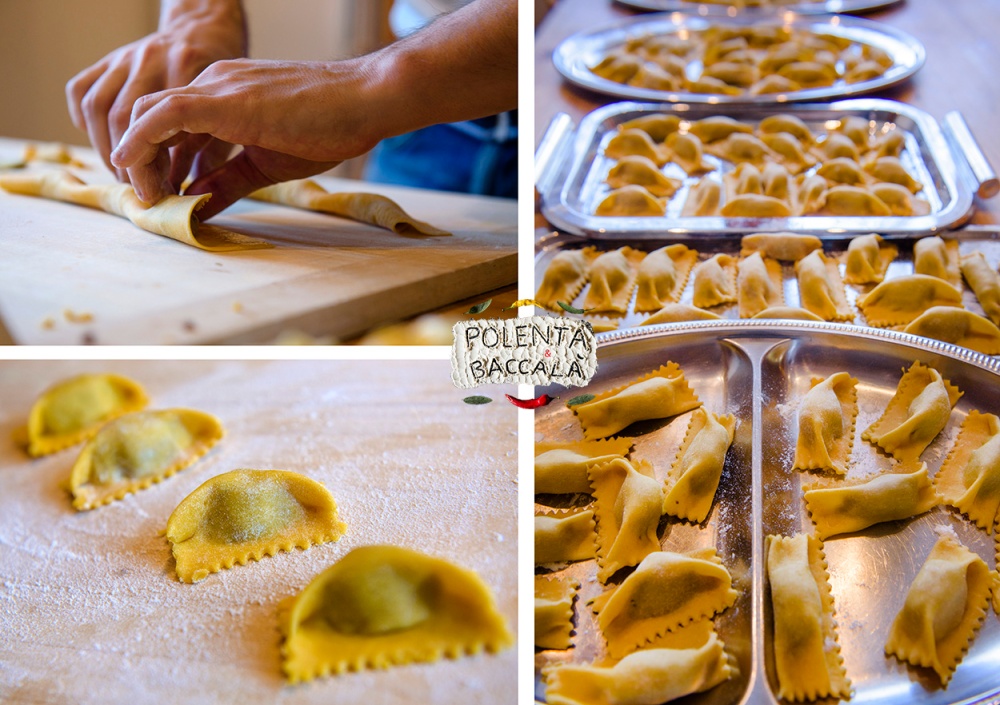
- Now you just have to boil the Agnolotti in abundant salted water for few minutes, and then pass them in a pan where you have melted (at low heat) a generous amount of butter and fresh sage. If few spoons of filling have remained you can put it in the hot butter, to make the sauce even richer 🙂
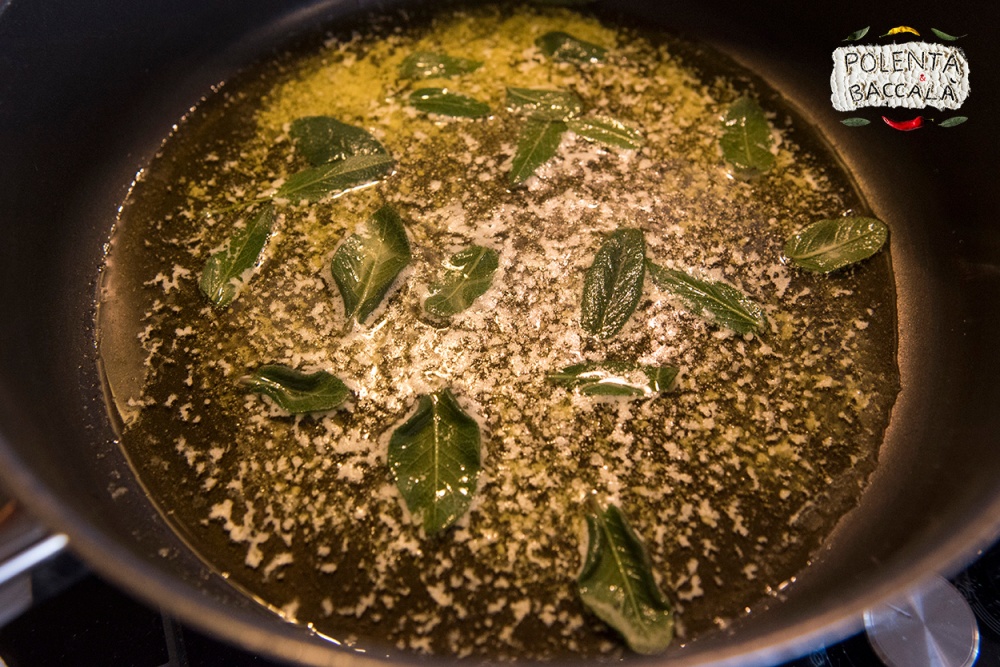
- Serve it, sprinkle some more freshly grated Parmigiano Reggiano and enjoy it with a good red wine 😉
PS: if you prepare more than what you need, you can keep them in the fridge or in a cool room for about 12 hours, otherwise put them in the freezer in this way: first you put a tray with the Agnolotti in the freezer, in about 30-60 minutes they will be already cold enough not to attach to each other and then you can store them in freezer bags or boxes. Delicious fast food 😀
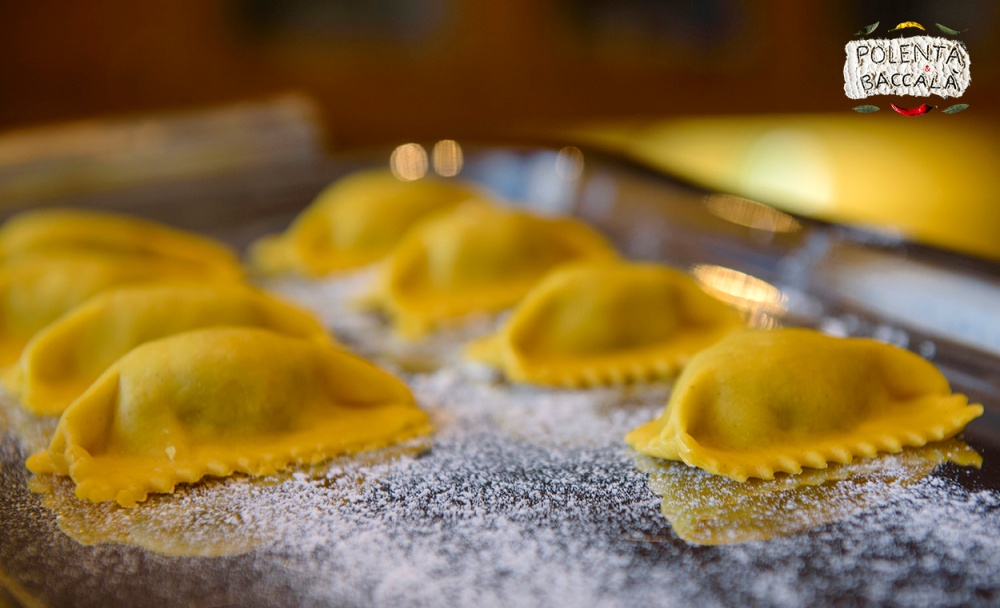


—————————————————————————————————————————————-
Products used in this recipe:
Beef: flat iron cut, Angus beef from Terra Pannonia farms
Eggs: free range, from a local farmer: they give a much better color
Di tutti i ravioli, sono i miei preferito
LikeLiked by 1 person
Per le mie origini lascio i casoncelli bresciani in testa 🙂 ma questi sono lì vicino! Grazie e buone feste 🙂
LikeLiked by 1 person
I agree with Paola, these must be the most delicious of all ravioli, and that’s saying a lot. Happy New Year!
LikeLiked by 1 person
Thank you! And Happy New Year to you too 🙂
LikeLike
While a lot of work, they sound like they are absolutely worth it. They look wonderful.
LikeLiked by 1 person
Yes, sometimes good things require time, this is one of those cases 🙂 thank you!
LikeLiked by 1 person